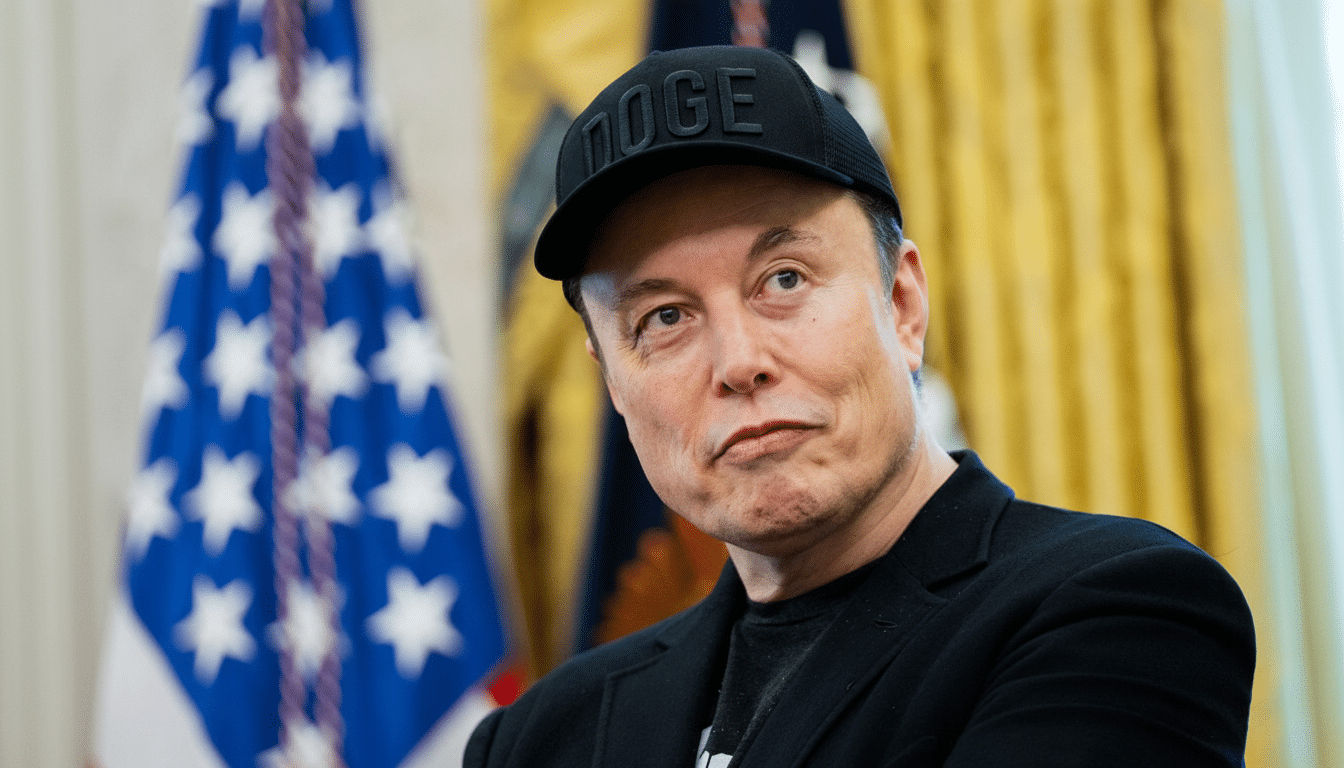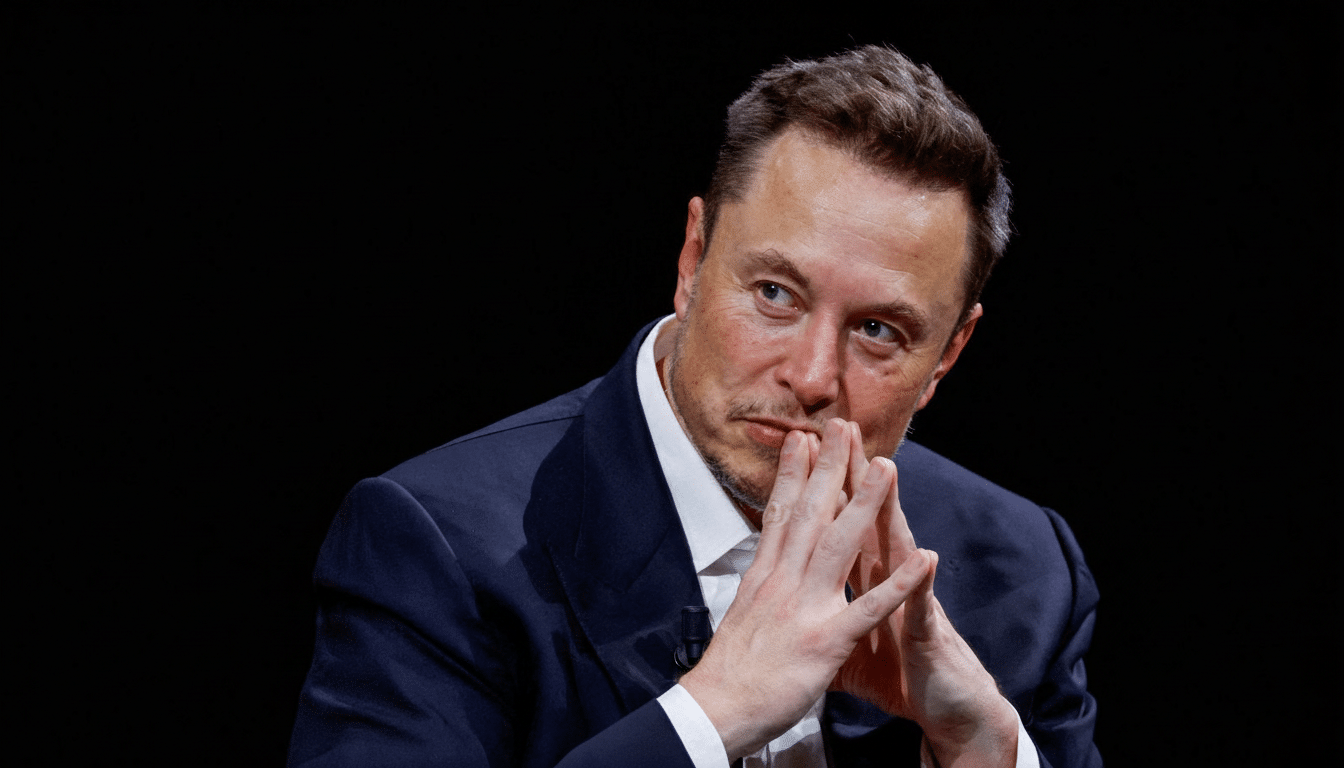Tesla has proposed a 10-year compensation plan for its chief executive, Elon Musk, that would be the largest corporate pay deal ever struck between a company’s board and its CEO, and is designed to keep Elon Musk in place as the company’s guiding force. The package relies on equity as opposed to salary, and would vastly raise Musk’s stake if Tesla were to jump from around a $1 trillion market value to more than $8 trillion.
The company’s pitch comes as its core auto margins have come under pressure and as leadership shines spotlights on audacious bets in artificial intelligence, robotaxis and humanoid robotics. Shareholders are scheduled to vote on the proposal at the next annual meeting next spring, in a decision that could reshape both Tesla’s company governance and its long-term strategic trajectory.

How the Package Would Work
The plan includes awards of more than 423 million additional stock options for Musk if Tesla hits a series of benchmarks, also including a stretch goal that would push Tesla’s market capitalization to more than $8 trillion. Though Tesla hasn’t revealed every single intermediate step, the framework resembles previous performance-based agreements mixing market cap, operational and product milestones over a 10-year period.
That would increase Musk’s voting power in the company to nearly one-quarter, were he to fully earn the award. Tesla stresses that the plan consists entirely of at-risk equity with pay only if extraordinary value to shareholders is created. In an S.E.C. filing, the company casted the moment as a “critical inflection point” and said that Musk’s stewardship is needed to grow “innovative and affordable technologies.”
Control, Dilution and Investor Math
The headline number looks big, but it’s the mechanics that count. Between 275 million shares and 423 million shares amounts to dilution of a low-teens percentage relative to Tesla’s current share count, depending on how and when tranches vest. That dilution is the price of potentially tying down Musk for the long term and shooting for outlier outcomes in autonomy and AI.
Musk has publicly said he wants about 25% voting control, which he insists gives him the authority to take on big, risky projects. By contrast, founder influence over mega-cap tech companies ranges broadly, and many governance experts warn that there are drawbacks to concentrated control, because it can make overseeing the board more fraught. Investors will balance that trade-off against the potential payoff of linking a visionary C.E.O. to ambitious targets.
Governance Hurdles After Delaware
Its proposal comes as executive pay at Tesla has been in turmoil in recent years. A court ruling in the Delaware Chancery Court had earlier thrown out Musk’s 2018 compensation package over procedural irregularities in gaining approval. Shareholders later reapproved that award, and Tesla has since taken steps to move its legal domicile, hoping for a clean procedural runway. More recently, the company put forward an alternate, $29 billion compensation plan as a bridge following the court’s ruling.

Proxy advisors including ISS and Glass Lewis, and large institutions — shareholders with an 8% stake or more in a company typically find and follow their voting and ruling advice — will scrutinize the new $1 trillion analogy through the independence of the board process, the quality of disclosure, and the rigor of pay-for-performance.
Academic work from the Stanford Rock Center and organization implies that boards gain added legitimacy from use of special committees, clear recusal protocols, and third-party fairness opinions—expect questions to come promptly.
The Strategic Bet: AI, Robotaxis and Robots
Tesla’s logic depends on advances outside cars. Management points to full self-driving software, a possible robotaxi network, the Dojo training supercomputer, and the Optimus humanoid platform as value drivers that back an astronomical valuation. The company’s recently released “Master Plan Part IV” outlines that vision, but even Musk has admitted that it’s somewhat light on specifics.
The leap from $1 trillion to $8 trillion would necessitate large, new profit pools, not just from sales of vehicles. Bulls point to autonomy and mobility services as well as scaling energy storage as plausible ladders to software-like margins. Skeptics argue that the barriers to self-driving, the execution risk in robotics and the heightened competition from Chinese automakers will make the road steep. The median S&P 500 CEO is paid about $15–20 million per year (per Equilar and AFL-CIO data), and Tesla’s proposal is an entire universe away from conventional compensation because it assumes outlier value creation.
What Investors Should Watch
First, brace for a bruising proxy season. The vote margin, the statements of any major institutions, and recommendations by proxy advisors will indicate whether or not sentiment is more about governance than strategy. Second, monitor the triggers for the award: the interplay of market cap, operational milestones and the autonomy metrics will dictate both dilution and the probability of payout.
Third, think accounting and capital structure. Although stock-based compensation is non-cash, it dilutes ownership and may impact per share measures. Credit ratings agencies would consider what the package means in comparison to cash generation, capex for AI infrastructure, and pricing dynamics in the EV enterprise.
Tesla’s board maintains that keeping an unusually ambitious C.E.O. is the straightest path to unlocking new industries. Shareholders now will have to decide whether the potential upside is worth what perhaps is the most audacious compensation blueprint in corporate history — and whether the governance guardrails are robust enough to get them there.

